How Did Queen Victoria Act as a Bourgeois Family During Seperate Spheres
I of history'southward near iconic Queens, Victoria was an era-defining figure whose fascinating life continues to inspire storytellers today. While y'all've surely heard of the long-reigning British monarch, there'due south plenty about Victoria that volition withal surprise you.
1. Her commencement name wasn't Victoria.
Born in Kensington Palace on May 24, 1819, Queen Victoria was originally named Alexandrina Victoria, afterward her godfather, Tsar Alexander I, but always preferred to go past her second proper noun, or the nickname 'Drina. At nascence, Victoria was 5th in the line of succession for the British crown, backside the four eldest sons of George III, including her three uncles and her father, Edward.
2. She was the start member of the Purple family to alive at Buckingham Palace.
Presently subsequently her accretion to the throne, Queen Victoria moved into Buckingham Palace, which was previously owned by her late uncle King William IV. This made Queen Victoria the commencement reigning monarch to have up residence at Buckingham, though her move did not come up without its struggles. As the royal family unit's website puts it, "Her marriage to Prince Albert in 1840 shortly showed up the Palace's shortcomings."
The Palace was in need of extreme renovations if it was going to be a family home as Queen Victoria intended it to exist. Victoria put in the piece of work, adding an entirely new fly, and years after, Buckingham continues to serve every bit a identify of royal business and the London residence of Queen Elizabeth.
3. She was barely 5 anxiety tall.
The monarch was four inches shorter than Queen Elizabeth II.
4. She became Queen when she was 18.
At 6 a.m. on June 20, 1837, Victoria was woken from her bed at and informed that her uncle, King William IV, had suffered a heart set on and died during the dark. Less than a calendar month afterwards turning eighteen, Victoria was Queen.
five. Growing upward, she was under constant supervision.
Less than a year after Queen Victoria's birth, her father, Edward, Duke of Kent (the fourth son of George III) died of pneumonia, leaving the immature princess to be raised by her mother. Following his death, Victoria'due south mother, Duchess Victoria, was prepared to dominion alongside her girl if Victoria'southward uncle died and she ascended to the throne before she was officially of age. For this reason, Victoria'south mother used a strict code of bailiwick to shape the Queen-to-be. Afterwards known equally the "Kensington Organisation," it involved a strict timetable of lessons to improve Victoria's morality and intellect.
This meant she rarely got to collaborate with children her ain age considering of the demands on her time. Princess Victoria was under constant adult supervision and was also made to share a bedroom with her mother until she became Queen.
6. She was multilingual.
The young queen was an adept linguist, fluent in both English and German. Her mother and governess both had German roots, so Victoria grew upward speaking the language and subsequently used it frequently when speaking to her German husband, Prince Albert of Saxe-Coburg and Gotha. The Queen too studied French, Italian, and Latin.
Toward the end of her reign, when servants from Republic of india arrived at Windsor Castle in 1877, her attendant, Abdul Karim, taught the Queen many Hindu and Urdu phrases to better communicate with her servants. "I am learning a few words of Hindustani to speak to my servants," she wrote in her diary, co-ordinate to a volume about the period, Victoria & Abdul . "It is a slap-up interest to me for both the language and the people, I accept naturally never come into real contact with before."
seven. She survived at multiple assassination attempts.
During her reign, several attempts were made at Queen Victoria's life, all of them unsuccessful. The first notable attempt was made in 1840, when 18-yr-old Edward Oxford fired at the Queen'southward carriage in London. Oxford was accused of high treason for his crime and was ultimately found not guilty for reasons of insanity, according to the History channel's website. 2 men tried to shoot her in 1842, and in 1849, her carriage was attacked by William Hamilton, an unemployed Irish gaelic immigrant who subsequently pled guilty to the crime and was banished for seven years, History reports. One yr later, Robert Pate, a old soldier, used an atomic number 26-tipped cane to hit the Queen in the head, according to Smithsonian Magazine.
The terminal notable try took place in March of 1882, when a Scottish poet named Roderick Maclean shot at Queen Victoria's railroad vehicle with a pistol while leaving the Windsor train station. Co-ordinate to Time , this was Maclean'south 8th attempt at assassinating the Queen. Maclean was tried for high treason and was constitute "non guilty, but insane," then Maclean was sentenced to live out his days in an asylum until his death in 1921, the Guardian reports. Despite the chaos and fright that followed the many assassination attempts, Queen Victoria became more and more popular with the public later each attempt.
8. She proposed to her hubby.
In the atomic number 82 up to her 17th birthday party, then-Princess Victoria met her get-go cousin, Prince Albert of Saxe-Coburg and Gotha. Four years afterwards, Victoria, now the monarch, proposed to Prince Albert on October xv, 1839 and they were married on February 10, 1840, in the Chapel Royal of St. James's Palace in London.
Victoria was securely in honey with Albert and, once they were married, she claimed to be truly happy for the showtime time in her life. After their wedding night, Queen Victoria wrote in her diary, "I never, never spent such an evening!! My honey love dearest Albert ... his excessive dearest & amore gave me feelings of heavenly love & happiness I never could have hoped to take felt before!"
9. She began more than ane pop wedding trend.
At the time of her wedding, it was mutual for hymeneals dresses to come in a diverseness of colors. Queen Victoria, however, wished to show off the lace embroidery of her dress and requested it in white. She also asked that none of her guests habiliment white then as not to draw attention abroad from her, and she even had the pattern for her dress destroyed so that it could not be copied, according to Vogue. Queen Victoria accessorized the dress—consummate with an eighteen-human foot train—with white satin shoes, Turkish diamond earrings, and a sapphire brooch that belonged to Prince Albert. Over her veil, the queen wore a wreath of myrtle and orange blossoms.
10. And a popular Christmas i every bit well.
You tin can give thanks Queen Victoria and her husband Prince Albert for your Christmas tree. They popularized the custom in 1848 when Albert sent busy trees to schools and army barracks around Windsor. An image of the royal family unit decorating a tree was also published that year, inspiring other British families to do the same.
Victoria and Albert were very hands-on in the process. "Queen Victoria and Prince Albert brought the tree into Windsor Castle on Christmas Eve and they would decorate it themselves," Royal Drove curator Kathryn Jones explained to the BBC. "They would light the candles and put gingerbread on the tree and the children would exist brought in."
11. She and her married man had nine children.
Over the course of her life, Queen Victoria was mother to nine children with Prince Albert. Her sons and daughters would later go on to ally into several other European monarchies, and would go on to produce the Queen's 42 grandchildren.
12. She became the commencement known carrier of hemophilia, known every bit the "Royal affliction."
Queen Victoria was the commencement in her family to deport hemophilia B, a blood clotting disorder, simply the Queen herself was not a hemophiliac. Because of Victoria's vast lineage, the disorder was passed on to the members of regal and noble families across Europe. A 2009 report in Science Magazine even linked the hemophilia mutation to members of the Russian royal family, the Romanovs.
The disease claimed several of her descendants: Queen Victoria'southward son Leopold, the Knuckles of Albany, died at age 30 after he slipped and fell, and two of Queen Victoria's grandsons— Friedrich and Leopold—also bled to decease due to the disease. It is believed that the terminal majestic carrier of the disease was Prince Waldemar of Prussia, who died in 1945, Science Magazine reports.
13. She was the first monarch to ride a train.
The Victorian era was a time of rapid technological advocacy and industrialization. Electricity started to get more common and photography became a popular medium, and runway systems spread across Britain. In 1842, Victoria became the first monarch to ride a train, according to PBS . The ride from Slough, near Windsor Castle, to Paddington in West London took about 30 minutes to consummate. The 23-year-onetime Queen constitute the ride delightful and said the "movement was very slight, and much easier than a carriage—also no dust or great heat," according to People .
14. She is the 2nd-longest reigning British monarch.
Not long ago, Queen Victoria held the title of longest reigning British monarch, with a total reign of 63 years and seven months. In 2015, Queen Elizabeth II broke Queen Victoria's record and continues to concur it today.
fifteen. Her proper noun lives on all over the world.
Every bit the Queen of England during United kingdom's imperial height, Queen Victoria inspired the title of everything from lakes and mountains to cities across what was then the empire. From the 33 Victoria Roads in the United Kingdom to Victoria Park in Bhavnagar, India and two Mount Victorias in New Zealand, her name lives on all over the world.
This content is created and maintained by a third party, and imported onto this page to aid users provide their email addresses. You may be able to discover more information near this and similar content at piano.io
Source: https://www.townandcountrymag.com/society/tradition/a14510744/queen-victoria-facts/
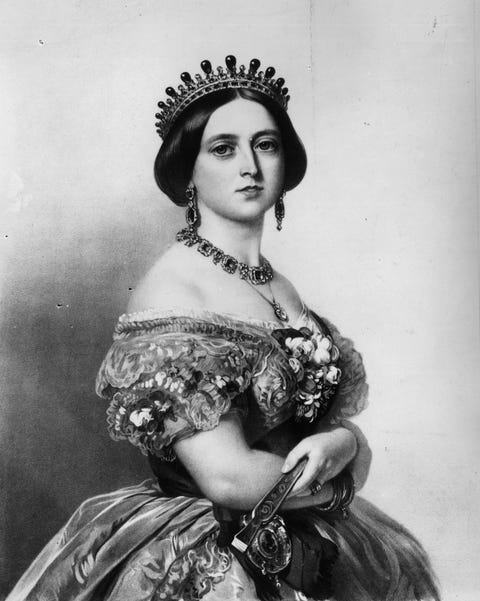
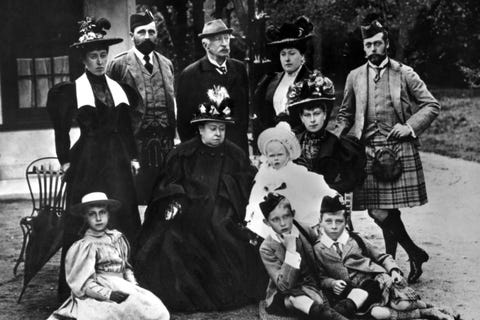
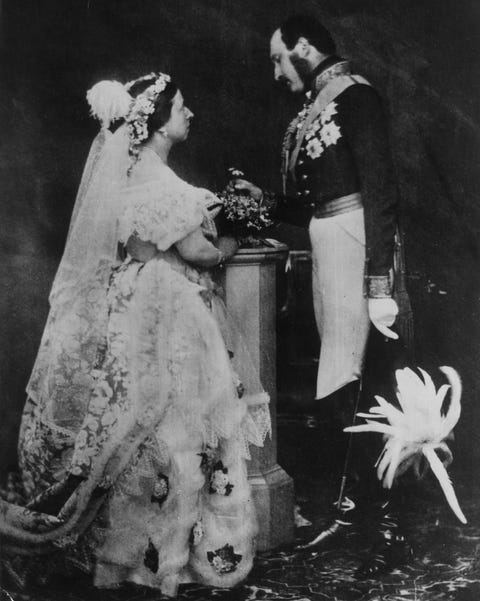
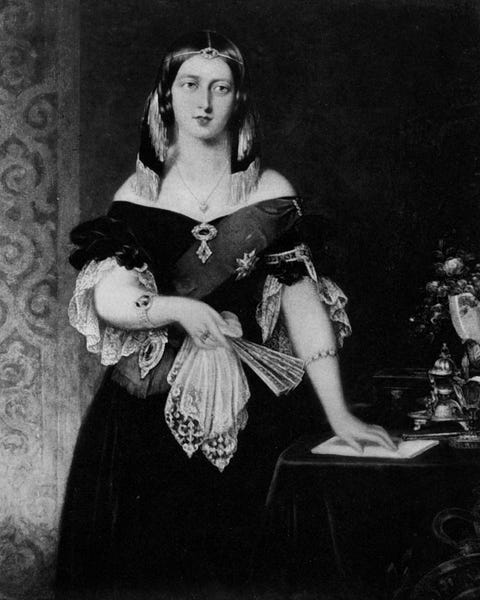
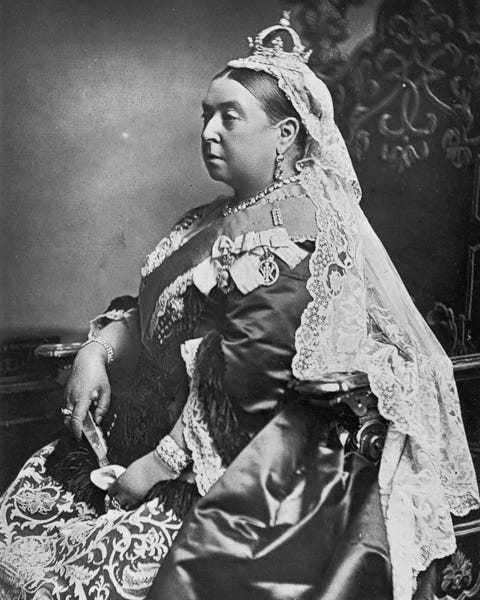








Postar um comentário for "How Did Queen Victoria Act as a Bourgeois Family During Seperate Spheres"